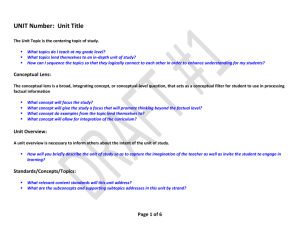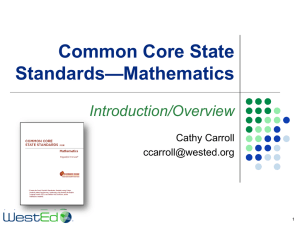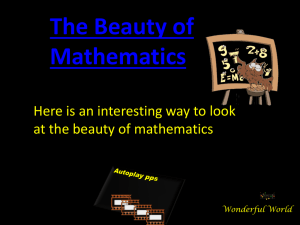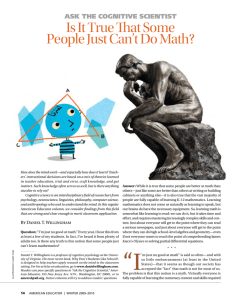Smith, Nikki
advertisement
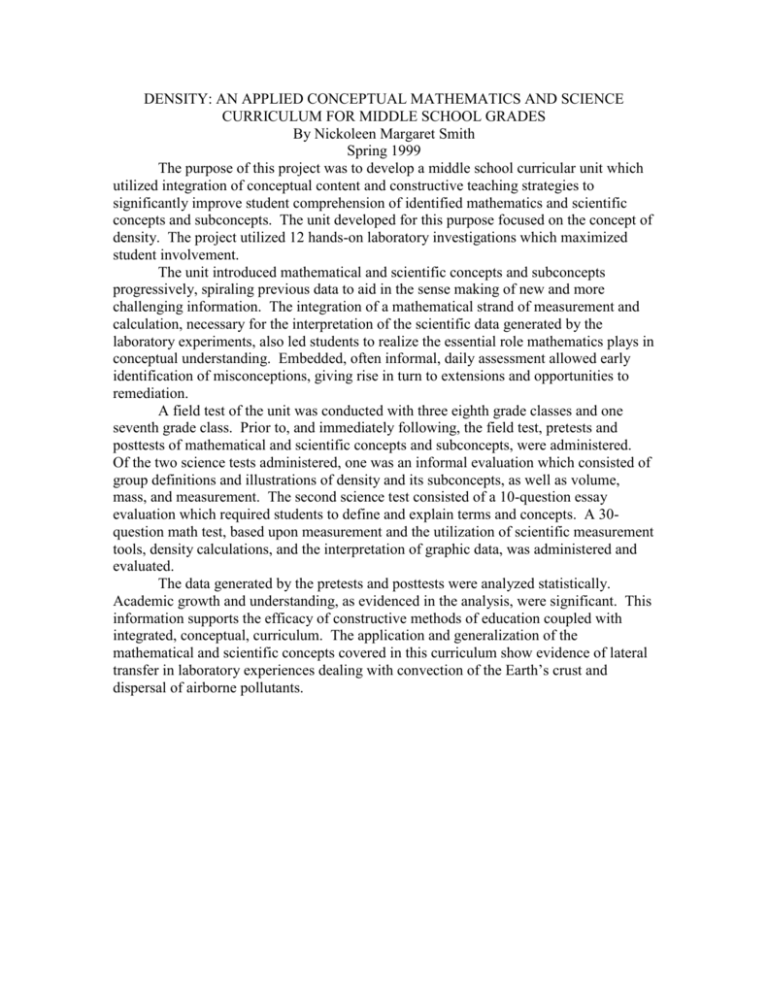
DENSITY: AN APPLIED CONCEPTUAL MATHEMATICS AND SCIENCE CURRICULUM FOR MIDDLE SCHOOL GRADES By Nickoleen Margaret Smith Spring 1999 The purpose of this project was to develop a middle school curricular unit which utilized integration of conceptual content and constructive teaching strategies to significantly improve student comprehension of identified mathematics and scientific concepts and subconcepts. The unit developed for this purpose focused on the concept of density. The project utilized 12 hands-on laboratory investigations which maximized student involvement. The unit introduced mathematical and scientific concepts and subconcepts progressively, spiraling previous data to aid in the sense making of new and more challenging information. The integration of a mathematical strand of measurement and calculation, necessary for the interpretation of the scientific data generated by the laboratory experiments, also led students to realize the essential role mathematics plays in conceptual understanding. Embedded, often informal, daily assessment allowed early identification of misconceptions, giving rise in turn to extensions and opportunities to remediation. A field test of the unit was conducted with three eighth grade classes and one seventh grade class. Prior to, and immediately following, the field test, pretests and posttests of mathematical and scientific concepts and subconcepts, were administered. Of the two science tests administered, one was an informal evaluation which consisted of group definitions and illustrations of density and its subconcepts, as well as volume, mass, and measurement. The second science test consisted of a 10-question essay evaluation which required students to define and explain terms and concepts. A 30question math test, based upon measurement and the utilization of scientific measurement tools, density calculations, and the interpretation of graphic data, was administered and evaluated. The data generated by the pretests and posttests were analyzed statistically. Academic growth and understanding, as evidenced in the analysis, were significant. This information supports the efficacy of constructive methods of education coupled with integrated, conceptual, curriculum. The application and generalization of the mathematical and scientific concepts covered in this curriculum show evidence of lateral transfer in laboratory experiences dealing with convection of the Earth’s crust and dispersal of airborne pollutants.



